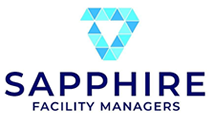In an era where environmental consciousness is paramount, sustainable facility management is emerging as a pivotal player in shaping a greener, more eco-friendly future. From energy-efficient technologies to waste reduction strategies and eco-friendly building materials, facility managers are at the forefront of implementing innovative solutions that not only benefit the planet but also lead to cost savings and enhanced operational efficiency. In this blog, we will delve into the latest sustainable facility management practices and trends that are shaping the way we manage and maintain facilities.
1. Energy Efficiency Takes Center Stage
One of the most significant trends in sustainable facility management is the adoption of energy-efficient technologies. From LED lighting systems to smart HVAC controls and energy-efficient appliances, facility managers are actively seeking ways to reduce energy consumption. These technologies not only lower utility bills but also reduce greenhouse gas emissions, contributing to a more sustainable future.
2. Waste Reduction and Recycling Initiatives
Waste reduction strategies are another critical aspect of sustainable facility management. Facilities are implementing comprehensive recycling programs and waste diversion practices to minimize landfill waste. This includes composting organic materials, recycling electronics, and reducing single-use plastics. Waste audits and tracking systems help identify areas for improvement and track progress toward sustainability goals.
3. Green Building Materials and Design
The use of eco-friendly building materials is a growing trend in facility management. From sustainable wood products to low-VOC paints and recycled materials, these choices reduce the environmental impact of construction and renovation projects. Additionally, sustainable building designs incorporate features like natural lighting, improved insulation, and energy-efficient windows to reduce energy consumption.
4. Water Conservation Strategies
Water is a precious resource, and facility managers are increasingly implementing water conservation measures. Low-flow fixtures, efficient irrigation systems, and rainwater harvesting are just a few examples of practices that reduce water consumption while maintaining a comfortable and functional facility.
5. IoT and Smart Building Management
The Internet of Things (IoT) is revolutionizing facility management by enabling smart, data-driven decisions. IoT sensors and connected devices monitor everything from energy usage to occupancy patterns. This real-time data empowers facility managers to make proactive adjustments, optimize resource allocation, and enhance overall efficiency.
6. Sustainable Landscaping and Green Spaces
The exterior of a facility is just as important as its interior when it comes to sustainability. Sustainable landscaping practices, such as xeriscaping and the use of native plants, reduce water usage and support local ecosystems. Additionally, green spaces and rooftop gardens not only provide aesthetic benefits but also improve air quality and reduce the urban heat island effect.
7. Embracing Renewable Energy Sources
Facilities are increasingly turning to renewable energy sources like solar panels and wind turbines to power their operations. Not only do these sources reduce carbon emissions, but they can also lead to significant long-term cost savings, especially as renewable energy technologies continue to advance.
8. Enhanced Indoor Air Quality
Sustainable facility management extends to indoor environmental quality. Improving air quality through proper ventilation, filtration, and the use of non-toxic materials enhances the health and well-being of building occupants, resulting in increased productivity and satisfaction.
9. Lifecycle Assessments and Green Certifications
To measure and showcase their sustainability efforts, facilities are undergoing lifecycle assessments and seeking green certifications such as LEED (Leadership in Energy and Environmental Design) or BREEAM (Building Research Establishment Environmental Assessment Method). These certifications demonstrate a commitment to sustainable practices and often lead to reduced operational costs and increased property value.
10. Employee Engagement and Sustainability Education
Lastly, sustainable facility management is not just about infrastructure and technology; it’s also about people. Facility managers are actively engaging employees in sustainability initiatives and providing education on best practices. An informed and motivated workforce can contribute significantly to achieving sustainability goals.
In conclusion, the future of sustainable facility management is bright, and it’s filled with innovative practices and trends that prioritize environmental responsibility while delivering tangible benefits such as cost savings, improved efficiency, and enhanced occupant well-being. As we move forward, these practices will continue to evolve, helping us create a more sustainable and resilient world for generations to come. Facility managers are at the forefront of this transformative journey, making a lasting impact on both the environment and the bottom line.


